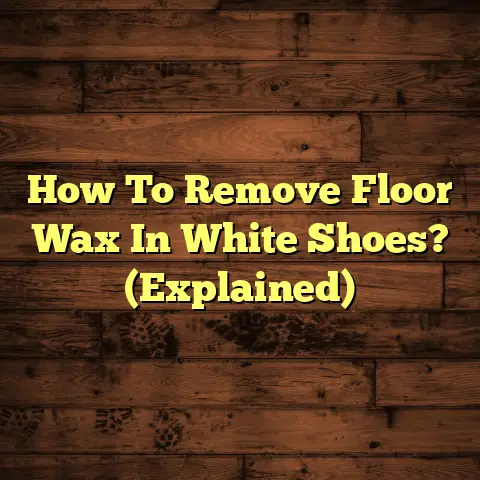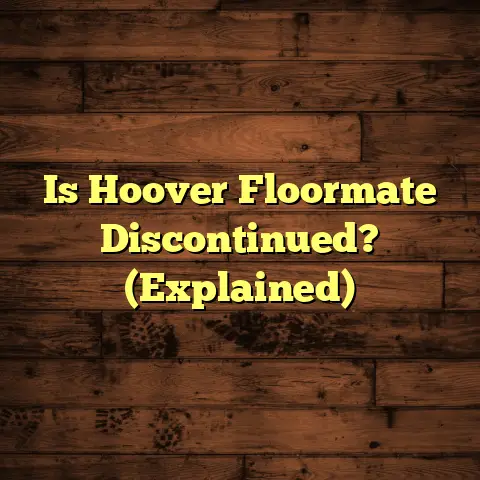Silicone Mats Safe For Vinyl Plank? (10 Things!)
In a world where we meticulously choose
our vinyl plank flooring to withstand
the test of time, it’s amusing that many
of us still wonder if a mere silicone mat
could be the ultimate protector—or the
unexpected culprit in our flooring drama.
Let’s dive into this, shall we?
1. Understanding Vinyl Plank Flooring
Okay, let’s kick things off with the basics. What exactly is vinyl plank flooring?
Well, it’s become a superstar in the flooring world, and for good reason.
Vinyl plank flooring (VPF) is a synthetic flooring option designed to mimic the look of hardwood, tile, or stone.
It’s made from layers of PVC and other materials, giving it durability and water resistance that natural materials often lack.
Think of it as the chameleon of flooring, able to adapt to nearly any style.
-
Popularity: Through the roof! It’s budget-friendly and DIY-friendly.
-
Benefits: Water resistance, scratch resistance, easy installation, and a wide range of styles.
I’ve seen homeowners transform entire
basements with VPF, turning damp,
uninviting spaces into cozy living areas.
It’s pretty impressive, if I do say so myself.
2. The Rise of Silicone Mats
Now, let’s talk about silicone mats. These things are everywhere!
From your kitchen to your bathroom, silicone mats have infiltrated our lives. But why?
Silicone mats are typically made from food-grade silicone rubber, which is known for its flexibility, heat resistance, and non-slip properties.
You’ll find them used as baking mats, placemats, bathroom mats, and even as protective mats under appliances.
-
Uses: Kitchen mats, bathroom mats, pet feeding mats, crafting mats.
-
Why the hype?: Heat resistance, non-slip, easy to clean, durable.
I remember one client who used silicone mats under her dog’s water bowl.
She was tired of the water rings on her
hardwood floors.
Smart move, right?
But would it work on VPF?
That’s the
question we’re here to answer.
3. The Science Behind Silicone Mats
So, what makes silicone so special? Let’s get a little technical for a moment.
Silicone is a synthetic polymer that
contains silicon, oxygen, carbon, and
hydrogen.
It’s this unique chemical
structure that gives silicone its desirable properties.
Unlike rubber or plastic, silicone is remarkably stable and doesn’t react easily with other materials.
This is why it’s considered food-grade and safe for various applications.
-
Non-Slip Feature: Silicone has a high coefficient of friction, meaning it grips surfaces well, reducing the risk of slipping.
Interaction with Vinyl: Silicone doesn’t typically react chemically with vinyl.
However, prolonged contact can sometimes lead to issues, which we’ll discuss later.
I often explain it like this: Silicone is like
that friend who’s always calm and doesn’t
cause drama.
But even the calmest friend
can have a bad day, right?
4. Potential Risks of Silicone Mats on
Vinyl Plank Flooring
Alright, let’s get to the juicy part.
What
could possibly go wrong when you put a
silicone mat on your vinyl plank floor?
Well, there are a few potential pitfalls to be aware of.
-
Staining/Discoloration: Some homeowners have reported that silicone mats can cause discoloration or staining on vinyl floors over time.
This is more likely to occur with colored silicone mats or if the floor is exposed to direct sunlight.
-
Trapped Moisture: If moisture gets trapped under the mat, it can lead to mildew growth or damage to the adhesive layer of the vinyl plank.
-
Plasticizer Migration: Some cheaper vinyl planks may contain plasticizers that can react with the silicone, leading to discoloration or a sticky residue.
I’ve personally seen cases where red silicone mats left a pinkish hue on light- colored vinyl floors.
It’s not pretty, and it’s a pain to remove.
That’s why it’s so crucial to understand
the risks before slapping down a mat.
5. Benefits of Using Silicone Mats on
Vinyl Plank
Now, before you swear off silicone mats forever, let’s talk about the good stuff.
There are definitely benefits to using silicone mats on your vinyl plank floors.
-
Scratch Resistance: Silicone mats provide a protective barrier against scratches, dents, and other types of damage.
This is especially useful in high-traffic areas or under heavy furniture.
-
Cushioning: Silicone mats offer a degree of cushioning, making it more comfortable to stand for extended periods.
Easy Cleaning: Silicone mats are incredibly easy to clean.
Just wipe them down with a damp cloth or throw them in the dishwasher.
I’ve used silicone mats under my toolbox in my workshop, and they’ve saved my concrete floor from countless scratches.
They’re tough, reliable, and easy to maintain.
6. Real-Life Experiences: Case Studies
Let’s hear from real people who’ve used
silicone mats on their vinyl plank floors.
I’ve gathered a few anecdotes to give you
a balanced perspective.
Positive Experience: “I’ve been using silicone mats in my kitchen for years, and they’ve saved my vinyl floor from spills and scratches.
I just make sure to lift them up and clean underneath every week.” – Sarah M.Negative Experience: “I had a red silicone mat in my bathroom, and it left a weird stain on my light-colored vinyl floor.
I tried everything to remove it, but nothing worked.
I had to replace the plank.” – John B.Neutral Experience: “I use clear silicone mats under my office chair, and they work great.
I haven’t noticed any discoloration or damage, but I do clean them regularly.” – Emily L.
These stories highlight the variability of experiences.
Some people swear by silicone mats, while
others have had negative outcomes.
It really depends on the type of mat, the
quality of the vinyl, and how well you
maintain your floors.
7. The Comparison Game: Silicone Mats
vs. Other Mat Materials
How do silicone mats stack up against
other common mat materials like rubber,
fabric, or plastic?
Let’s take a look.
As you can see, each material has its own set of pros and cons.
Silicone stands out for its heat resistance and ease of cleaning, but it’s important to be aware of the potential for discoloration.
I often recommend considering the specific needs of the area where the mat will be used.
For example, a fabric mat might be better suited for a low-traffic area where comfort is a priority, while a rubber mat might be ideal for a high-traffic area where durability is key.
8. Expert Opinions
I decided to consult with some fellow flooring specialists to get their take on silicone mats and vinyl plank flooring.
Here’s what they had to say:
“I generally advise against using colored silicone mats on light-colored vinyl floors.
The risk of discoloration is just too high.” – Mark S., Flooring Installer“If you’re going to use silicone mats, opt for clear or neutral-colored ones.
Also, make sure to clean underneath them regularly to prevent moisture buildup.” – Lisa R., Interior Designer“The quality of the vinyl plank flooring matters.
Cheaper vinyl may be more prone to discoloration or damage from silicone mats.” – Tom H., Flooring Retailer
These experts echoed many of my own concerns and recommendations.
The key takeaway is to be cautious, choose your mats wisely, and maintain your floors properly.
9. Maintenance Tips When Using
Silicone Mats
Alright, let’s get practical.
If you’re
determined to use silicone mats on your
vinyl plank floors, here are some
maintenance tips to minimize the risks:
-
Choose Clear or Neutral-Colored Mats: Avoid colored mats, especially red or dark colors, as they are more likely to cause discoloration.
Clean Regularly: Lift up the mats and clean underneath them at least once a week.
Use a mild soap and water solution to remove any dirt or moisture.Avoid Direct Sunlight: Excessive sunlight can exacerbate discoloration or fading.
Consider using curtains or blinds to protect your floors.-
Use Breathable Mats: Look for silicone mats with a textured surface or small holes to allow for better air circulation and prevent moisture buildup.
-
Test in an Inconspicuous Area: Before placing a silicone mat in a high-traffic area, test it in a hidden spot to see if it causes any adverse reactions.
I always tell my clients that prevention is better than cure.
A little bit of maintenance can go a long way in preserving the beauty and integrity of your vinyl plank floors.
10. Final Thoughts on Silicone Mats and
Vinyl Plank Flooring
So, are silicone mats safe for vinyl plank
flooring?
The answer, as with most things
in life, is: it depends.
Silicone mats can be a great way to protect your floors from scratches and spills, but they also carry the risk of discoloration or moisture damage.
By choosing your mats carefully, maintaining your floors properly, and being aware of the potential risks, you can minimize the chances of problems.
Ultimately, the decision of whether or not to use silicone mats on your vinyl plank floors is a personal one.
We seek the best for our floors, sometimes
the simplest solutions can lead us on the
most complex journeys.
Consider all the factors, weigh the pros
and cons, and make the choice that’s right
for you and your home.
Good luck!





